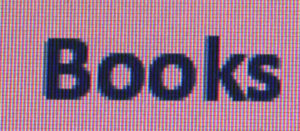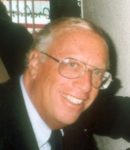 Places in the Parasha by Yoel Elitzur, PhD
Places in the Parasha by Yoel Elitzur, PhD

BOCA RATON, Florida — Many readers of the Bible have mistaken ideas about the places mentioned in the Bible. The book Places in the Parasha is a very good book, with chapters for each of the more than fifty Torah readings in synagogues on the Shabbat as well as the special readings on holidays. It identifies the location of places mentioned in the portions and gives us information about these places. As a result, we learn more about what the Torah is saying and get a deeper understanding of the events that are mentioned.
Professor Yoel Elitzur uses biblical and extra biblical sources. The 839-page book is filled with enlightening information and is easy to read and will change many misconceptions that people have who read the Bible superficially. It is part of the prestigious Maggid Books series which offers new approaches to Jewish texts and themes from the world’s leading rabbis, scholars, and philosophers. Maggid is an imprint of Koren Publishers Jerusalem. This series of Maggid books, including this one, will interest and enlighten readers of all religions.
Professor Elitzur reads the Bible as it is written and attempts to understand what exactly it is saying, with the help of all the historical, geographical, archaeological, and linguistic tools available to us. He addresses, for example, the widespread idea that it was Ramesses II who was the pharaoh of the Exodus because it seems to be in conflict with I Kings 6:1 which states that Solomon built the temple 480 years after the Exodus. The biblical dating yields a much earlier date for the Israelite enslavement and the Exodus.
He gives readers information such as that there are two different sets of borders of Israel in the Bible, one much larger than the other, the larger being from the Red Sea to the Euphrates, and explains that the history of Israel is based on the smaller borders. Commenting on the larger border, he tells how Yasser Arafat claimed that the two broad stripes in the modern Israeli flag represents the Nile and the Euphrates Rivers and the Star of David signifies the Jewish people. Arafat argued that the flag symbolized Israel’s intent to expand its territory to the entire area between the two rivers.
Elitzur notes, to cite another examples, that the Torah prohibits planting sacred trees and erecting stone pillars “for such the Lord your God detests” (Deuteronomy 16:21-22) because they were used for worship. Yet, contrary to the view that the patriarchs observed the not-yet-revealed Torah, “through the time of the patriarchs these practices had not yet prohibited,” and they were used by the patriarchs.
Similarly, it is a generally mistakenly thought that the Torah wanted the temple to be built at the highest possible point, yet the temples at Shiloh and Jerusalem were lower than the mountains behind them
He discusses many other fascinating subjects with similar enlightening details such as where is the Garden of Eden, where are Sodom and Gomorrah, the burial place of the patriarchs and matriarchs, assigning names, the war led by Deborah, stone and earthen altars in Israel, where is the ark of the covenant, names of Jerusalem in the Tanakh, Tzlofhad’s daughters, Levite cities, did Moses enter the Land of Israel, the temple in Shiloh that lasted for hundreds of years, what is Azazel, why do we live in Sukkot, where is Sinai, the conquest of Canaan, the Sea of Suph, the Jordan, Babylon, Amalek, the covenant, King David, Greeks, and much more.
The book is easy to read. It contains maps to help clarify what is stated in the chapters, a list of books at the end of chapters so that readers can acquire for more information, and detailed 54 pages of Index making it easy for readers to find subjects that interest them.
*
Rabbi Dr. Israel Drazin is a retired brigadier general in the U.S. Army chaplain corps and the author of more than 50 books.